Adding perennial spring flowers to your garden would give it the much-needed glow for the season.
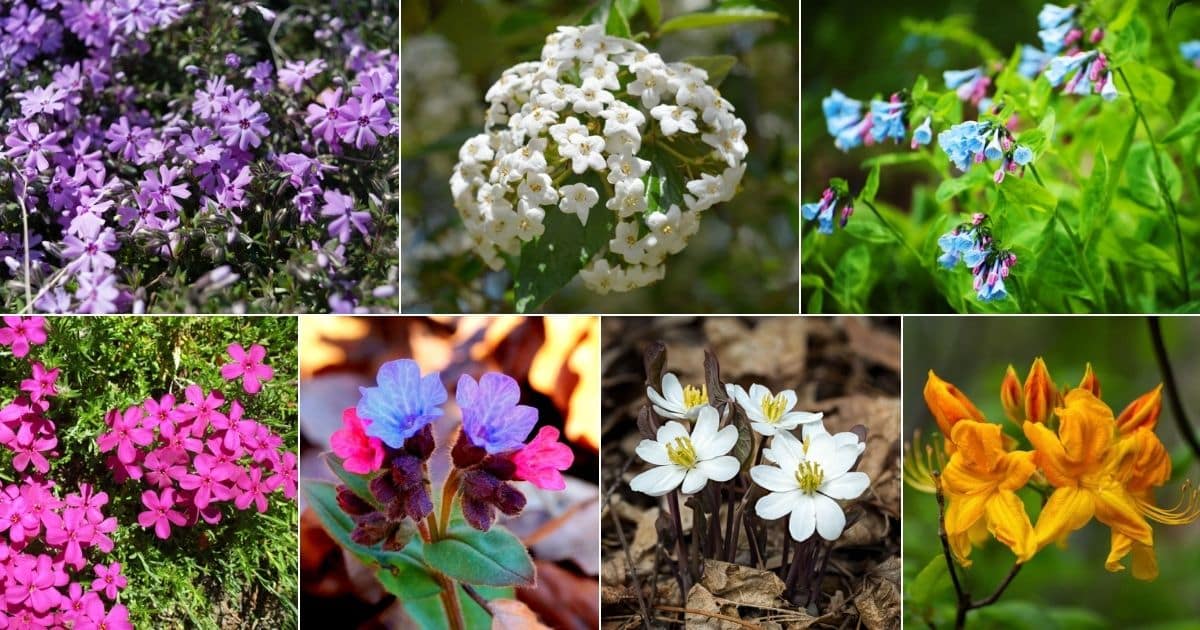
Knowing how unpredictable spring weather is, you must choose the right kind of hardy enough flowers to survive the season.
In this article, we will look at some of the various perennial flowers to plant in spring that will give you an early blooming welcome into the spring season.
Jump to:
- Different Perennial Flowers To Plant In Spring
- 1. Japanese Rose ‘Kerria Japonica.’
- 2. Flowering Quince ‘Chaenomeles Speciosa.’
- 3. Golden Oriole ‘Azalea Rhododendron’ (Golden Oriole)
- 4. Winter Health ‘Erica Carnea’
- 5. Wood Lily ‘Trillium grandiflorum.’
- 6. Twin leaf ‘Jeffersonia diphylla.’
- 7. Bloodroot ‘Sanguinaria Canadensis.’
- 8. Siberian Bugloss or False Forget - Me - Not ‘Brunerra Macrophylla’
- 9. Hellebore ‘Helleborus spp.’
- 10. Bleeding Heart ‘Lamprocapnos spectabilis.’
- 11. Lungwort ‘Pulmonary spp.’
- 12. Creeping Phlox ‘Phlox subulate’
- 13. Pigsqueak ‘Bergenia cordifolia.’
- 14. Primrose ‘Primula spp.’
- 15. Solomon's Seal ‘Polygonatum spp.’
- 16. Virginia Bluebells ‘Mertensia Virginia.’
- 17. Sea Thrift ‘Armeria Maritima.’
- 18. Garden Rock Cress ‘Arabia caucasian.’
- 19. Corydalis ‘Corydalis lutea.’
- 20. Candytuft ‘Iberis sempervirens.’
- 21. Woodland Phlox ‘Phlox divaricate
- 22. Yellow Alyssum ‘Aurina saxatilis.’
- 23. Japanese Pieris ‘Pieris Japonica.’
- 24. Korean Spice Viburnum ‘Virbunum carlesii.’
- 25. Stewartstonian Azalea ‘Rhododendron’
- Conclusion
Different Perennial Flowers To Plant In Spring
1. Japanese Rose ‘Kerria Japonica.’
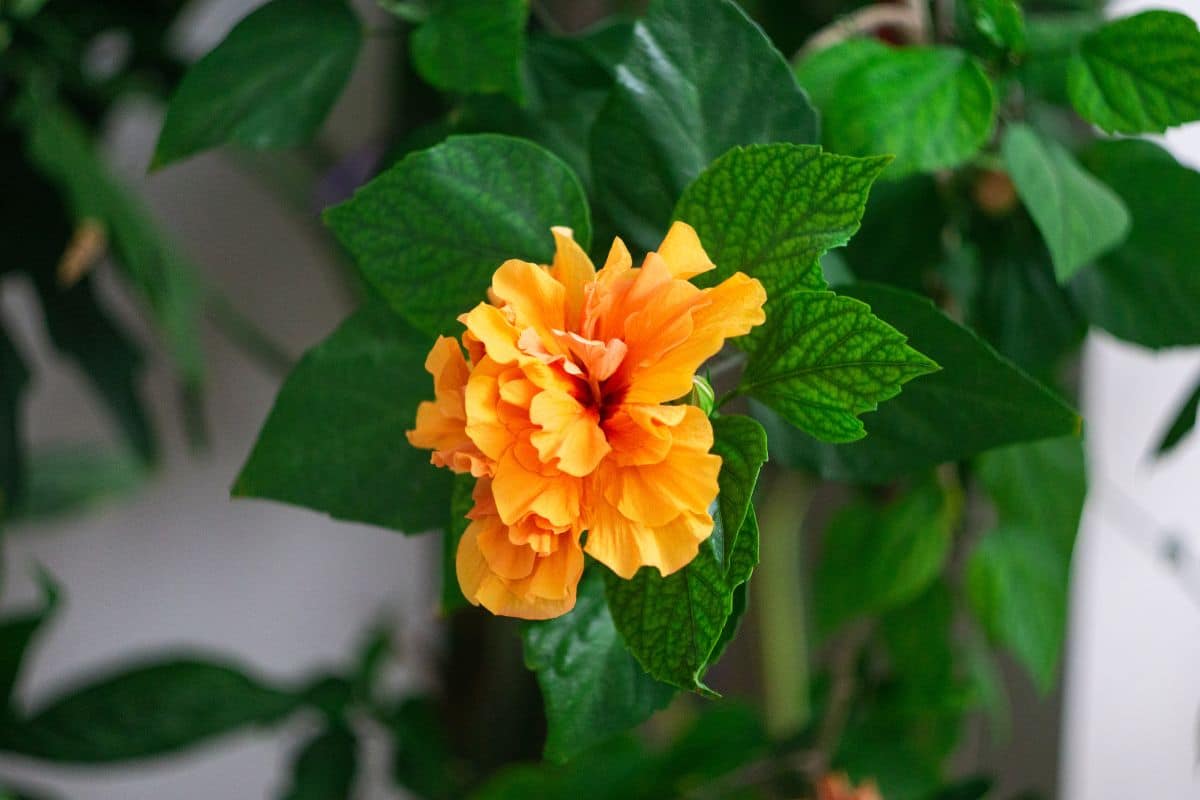
(USDA growing zones: 4 - 9)
The Japanese Rose bears a striking resemblance to many Rose flowers but is not a part of the Rosa genus.
The Japanese Rose can be classified as a low-maintenance flower. However, experienced gardeners warn you to watch out for new shoots lurking around the plant's base.
These shoots are generally referred to as suckers. They are to be removed to keep the plant's spread in check.
This beautiful flower with five petals will bloom immensely from April to May, regardless of shady conditions.
They are colored yellow and prefer to be grown under part shade conditions. For best results, use soil that's medium moist, average, and well drained.
2. Flowering Quince ‘Chaenomeles Speciosa.’
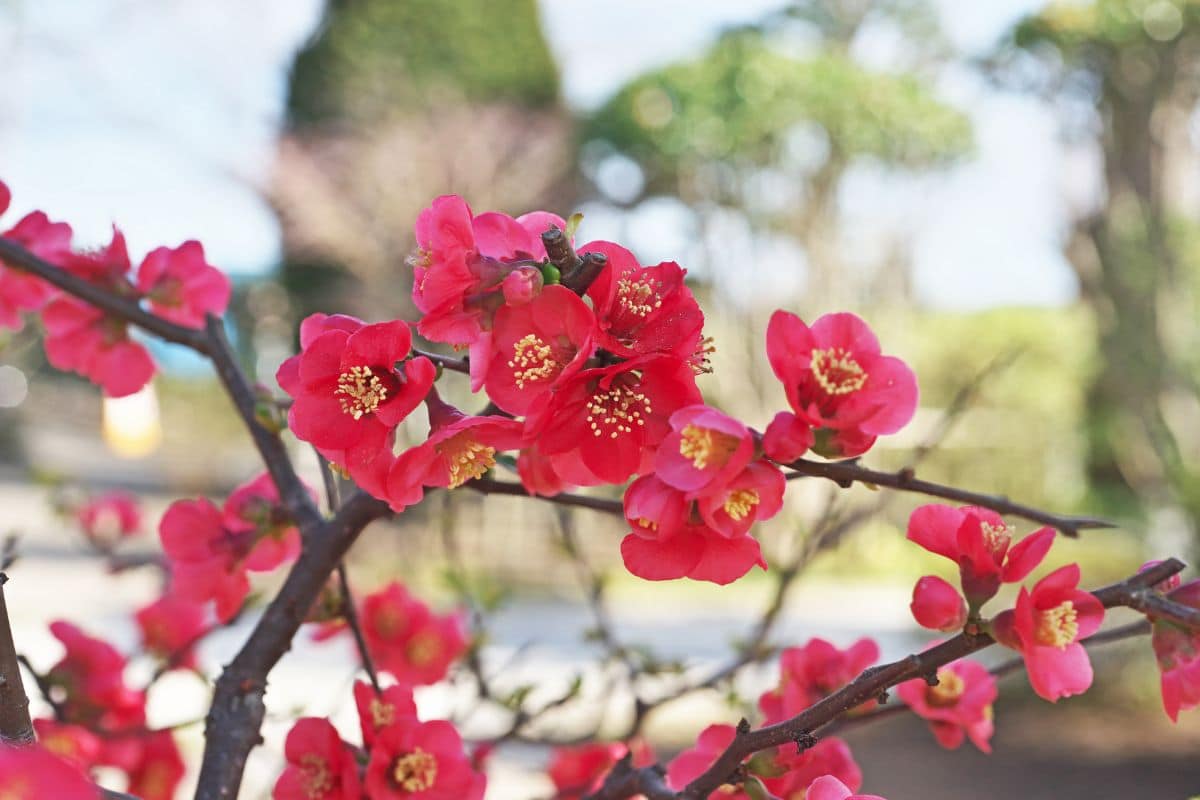
(USDA growing zones: 4 - 8)
An equally five-petaled flower like the Japanese Rose. Flowering Quince would bloom from March to April; the best part is the speckled yellow-green fruits that come right after the flowers.
The red flowers are about 2 inches in diameter and would open up before their dark green leaves spread out.
The flowering quince prefers to be grown under full sun and part shade and will thrive in loamy and well-drained soil.
Quick Tip: have the plant pruned down to keep them in shape.
3. Golden Oriole ‘Azalea Rhododendron’ (Golden Oriole)
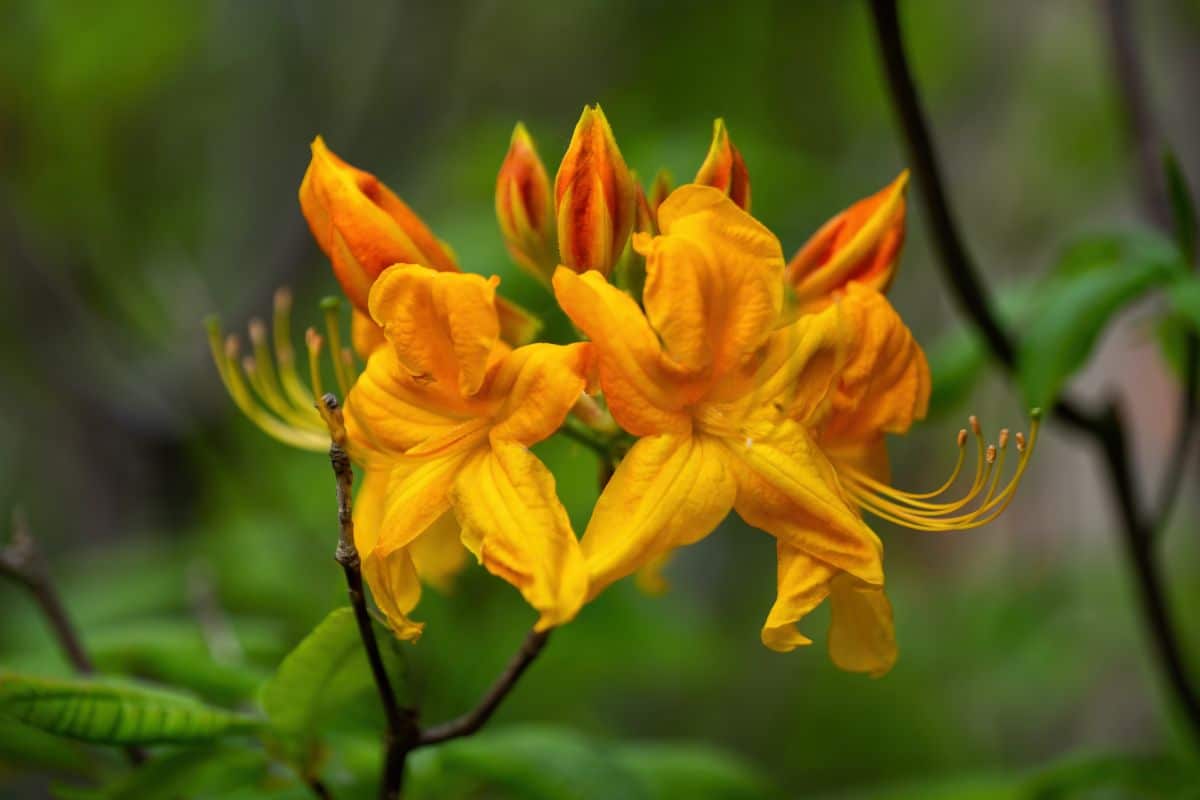
(USDA Growing Zones: 5 - 8)
These flowers bloom in early spring and beautify the entire place with bright yellow-orange flowers. When it's fall, the foliage transforms into an eye-catching orange-red color.
One excellent trait of this flower is that it attracts pollinators easily.
The golden Oriole can be found in yellow-orange colors; they prefer to be grown under full sun to part shade conditions in soil that are rich, acidic, evenly moist, and well drained.
Quick Tip: A layer of mulch added around the plants would help shield its roots and retain the proper soil moisture.
4. Winter Health ‘Erica Carnea’

(USDA growing zones: 5 - 7)
The winter health flower is different because it blooms in January, way before spring, and continues till March when spring arrives.
The flower can best be described as a low-growing, mold-forming plant of small but dense clusters of flowers.
They are available in pink and prefer to be grown under full sun to part shade conditions, in a soil that is sandy, loamy, medium moisture, acidic, and well drained.
Quick Tip: The winter health flower is quite a hardy plant and requires very minimal maintenance, but it would be nice on your part to prune it back to shape once flowering is over.
5. Wood Lily ‘Trillium grandiflorum.’
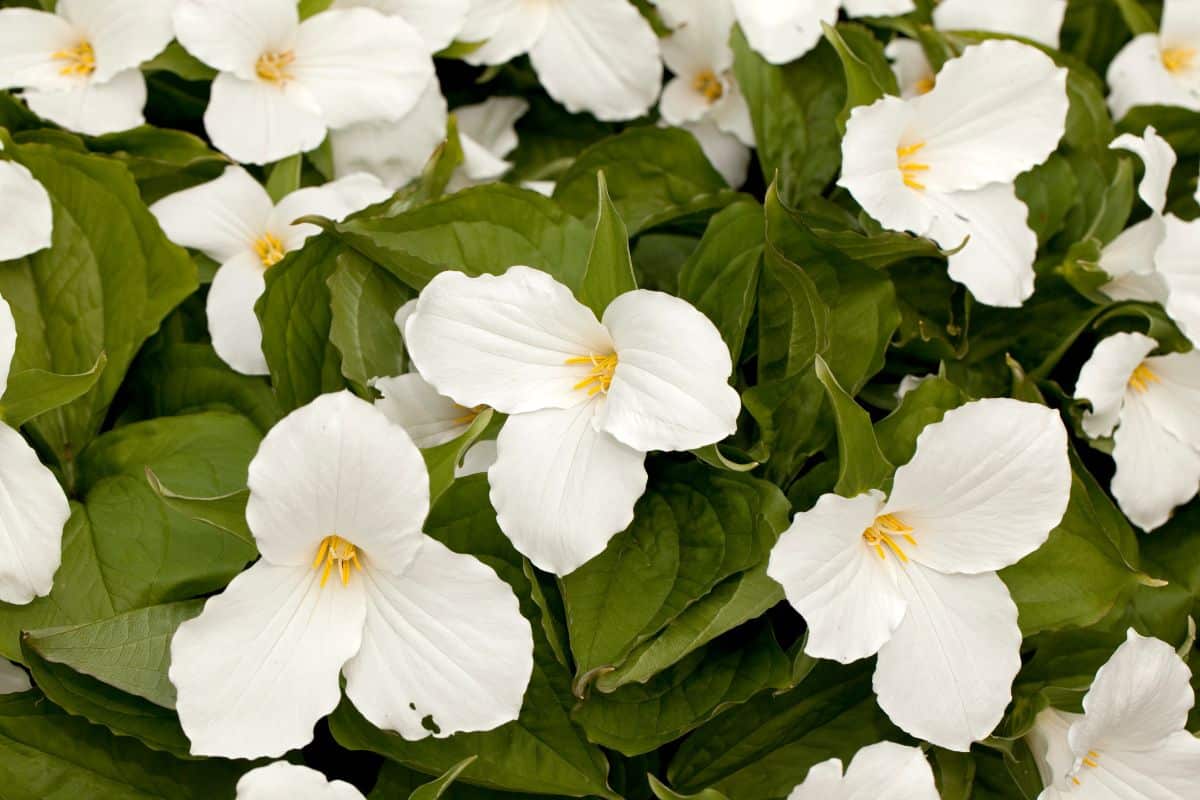
(USDA Growing zones: 4 - 8)
Wood lilies, or white trillium as they are also called, are well-rounded green leaves with petals and sepals appearing in groups of threes.
A native of Woodlands, wood lily systematically spreads gradually with the help of underground rhizomes.
They would thrive better when rich & moist but not soggy soil is used.
Bloom period? Most definitely, April. Wood lilies are colored white and prefer part shade to total shade exposure.
6. Twin leaf ‘Jeffersonia diphylla.’
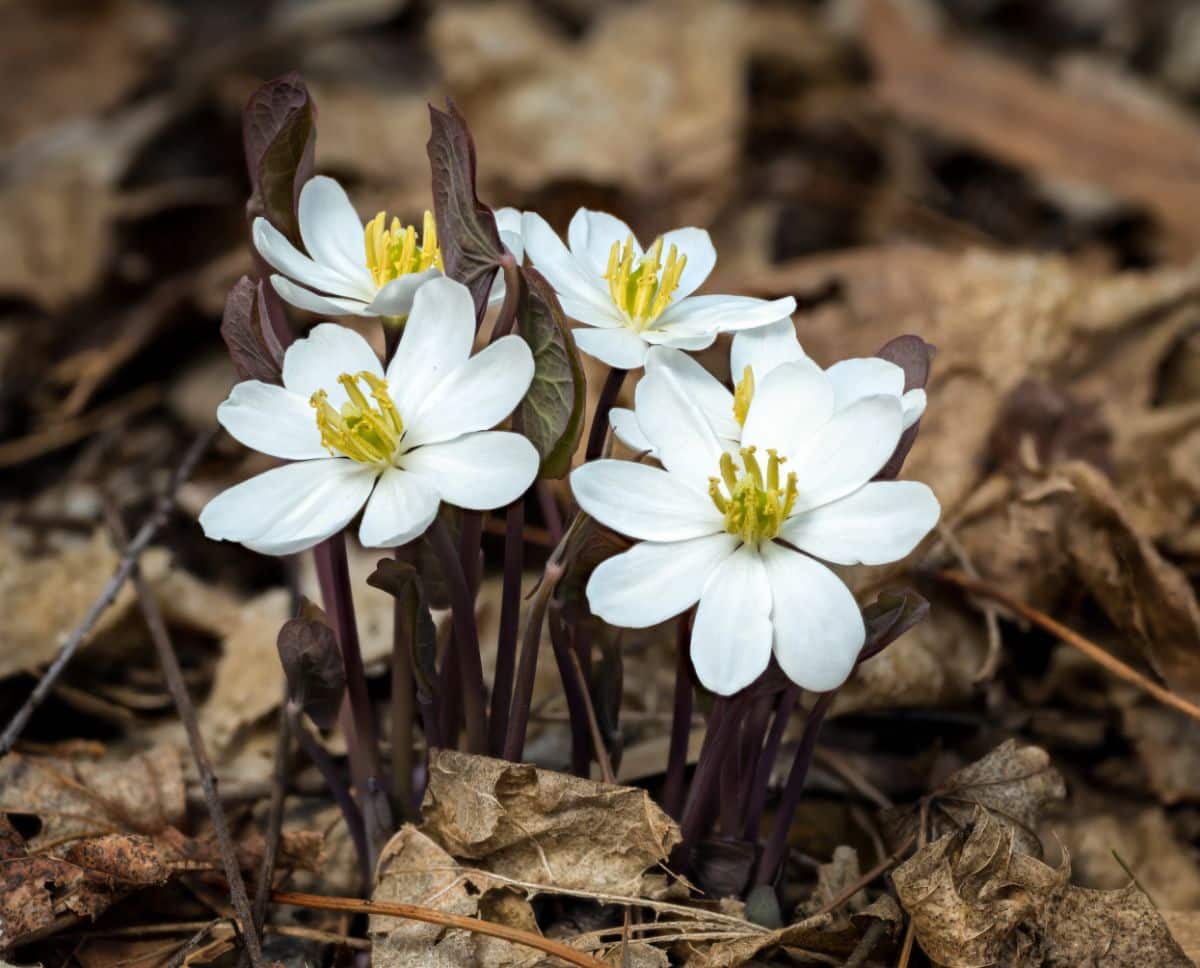
(USDA growing zones: 5 - 7)
Place the Twinleaf side by side with the bloodroot flower and see if you can tell the difference.
Can you?
Both flowers are very similar, with one being often mistaken for the other.
The Twinleaf is a flower native to North America; its name was culled following the way its set of two leaves is shaped, looking like butterfly wings. Its botanical name, Jefferson Diphylla, was derived from Thomas Jefferson, who was the first to grow them.
One spectacular trait of the Twinleaf? They bloom even before the leaves fan out.
They can be found in the color white. Twinleaf prefers to be grown using rich, moist, and well-drained soil; it would tolerate full shade but mainly needs part shade.
A trick to keeping your soil cool and moist would be to add a layer of mulch around them.
7. Bloodroot ‘Sanguinaria Canadensis.’
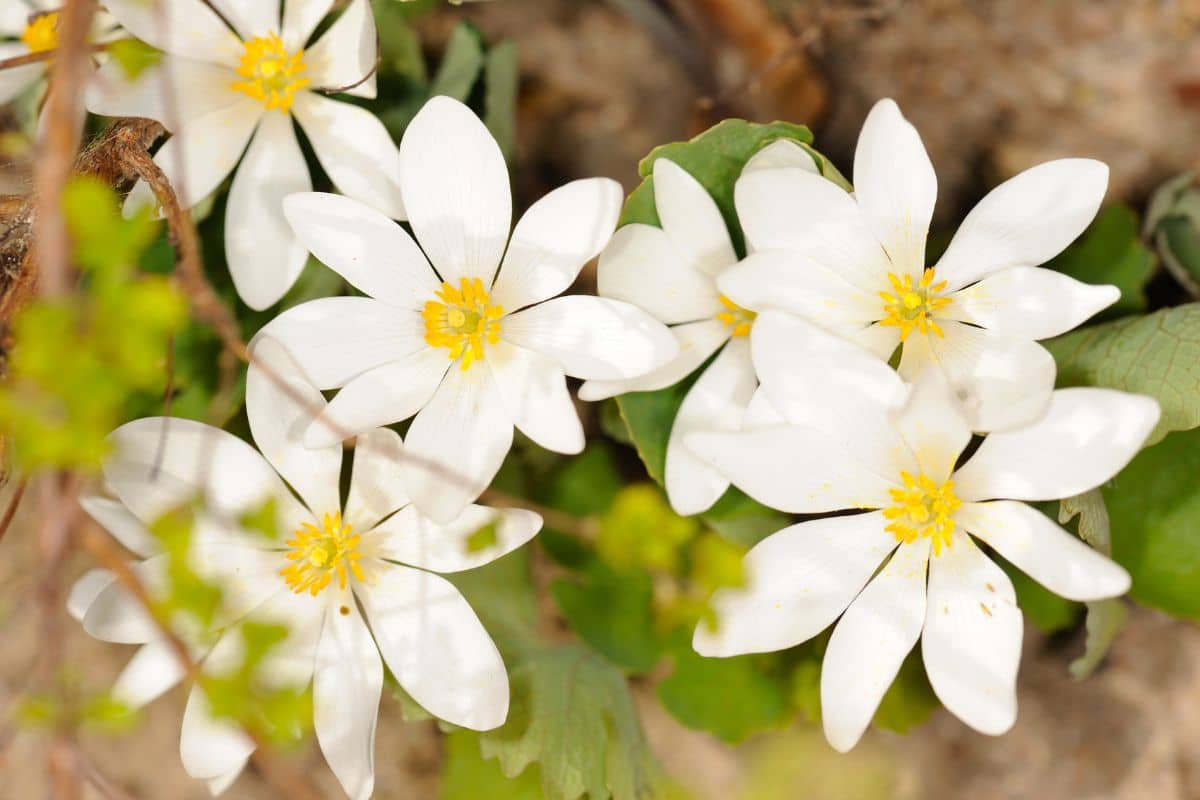
(USDA growing zones 3 - 8)
Bloodroot is perfect as a ground cover rather than a bedding plant. With its tiny white flowers, they shine right into the garden, making it come alive.
Bloodroot is quite a gentle flower. Unlike other ground covers, they are not known to invade or grow aggressively.
It keeps on serving great aesthetics even after the flower disappears. When this happens, the blue-green leaves provide an attractive backdrop for flowers that come in summer and form a beautiful carport on their own. An added advantage is the fact that it does not need a lot of tending to.
Blood roots prefer to be planted in rich, acidic, drained soil with a full to part shade exposure. They can be found available in colors white or light pink, with both variants bearing yellow centers.
8. Siberian Bugloss or False Forget - Me - Not ‘Brunerra Macrophylla’
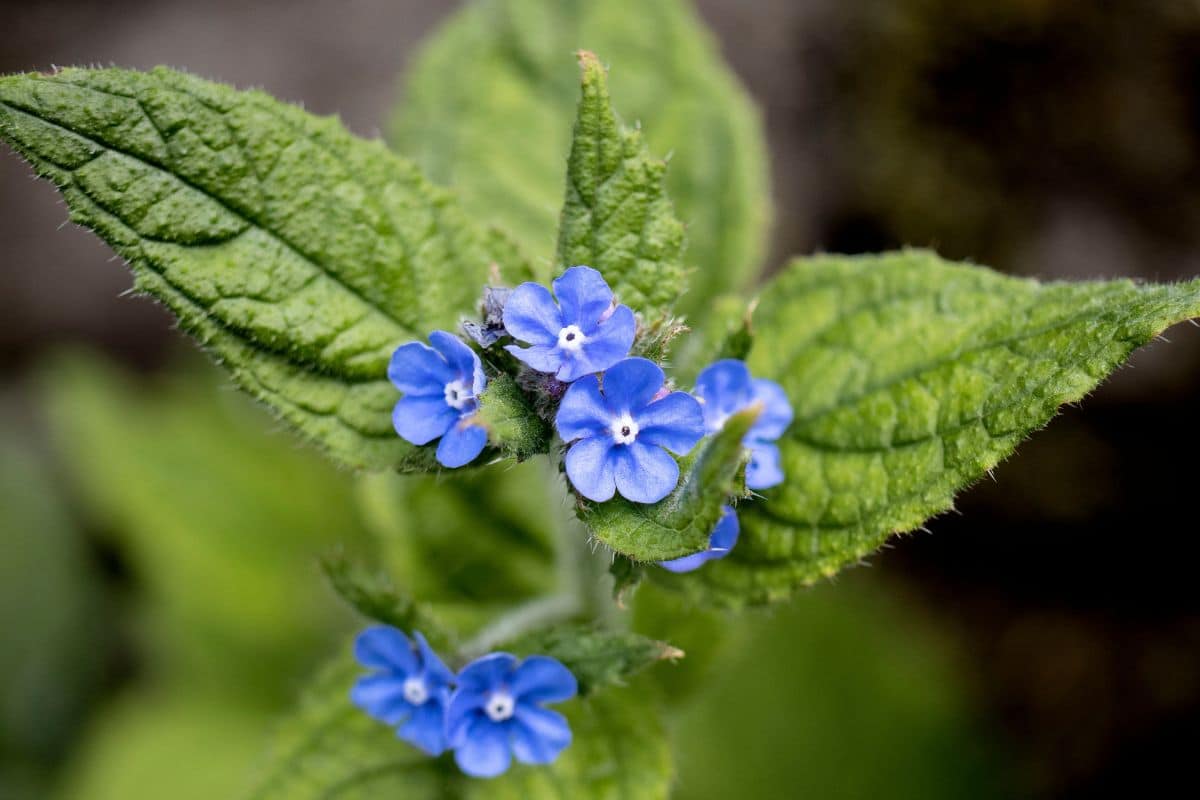
(USDA Growing Zones: 3 - 8)
With the Siberian bugloss, you are spoilt for choice with the different beautiful creamy variegation of its cultivars.
People are often stunned by its heart-shaped leaves, forgetting its exceptional blue flowers.
One reason why you should grow the Siberian bugloss? They are easy to care for; you only have to see that they are cut back during summer to keep it looking tidy and, simultaneously, allow for new leaves.
Its downside is the fact that they are slow-growing plants.
Siberian bugloss would prefer to be grown using rich, moist, and well-drained soil under a part shade exposure.
9. Hellebore ‘Helleborus spp.’
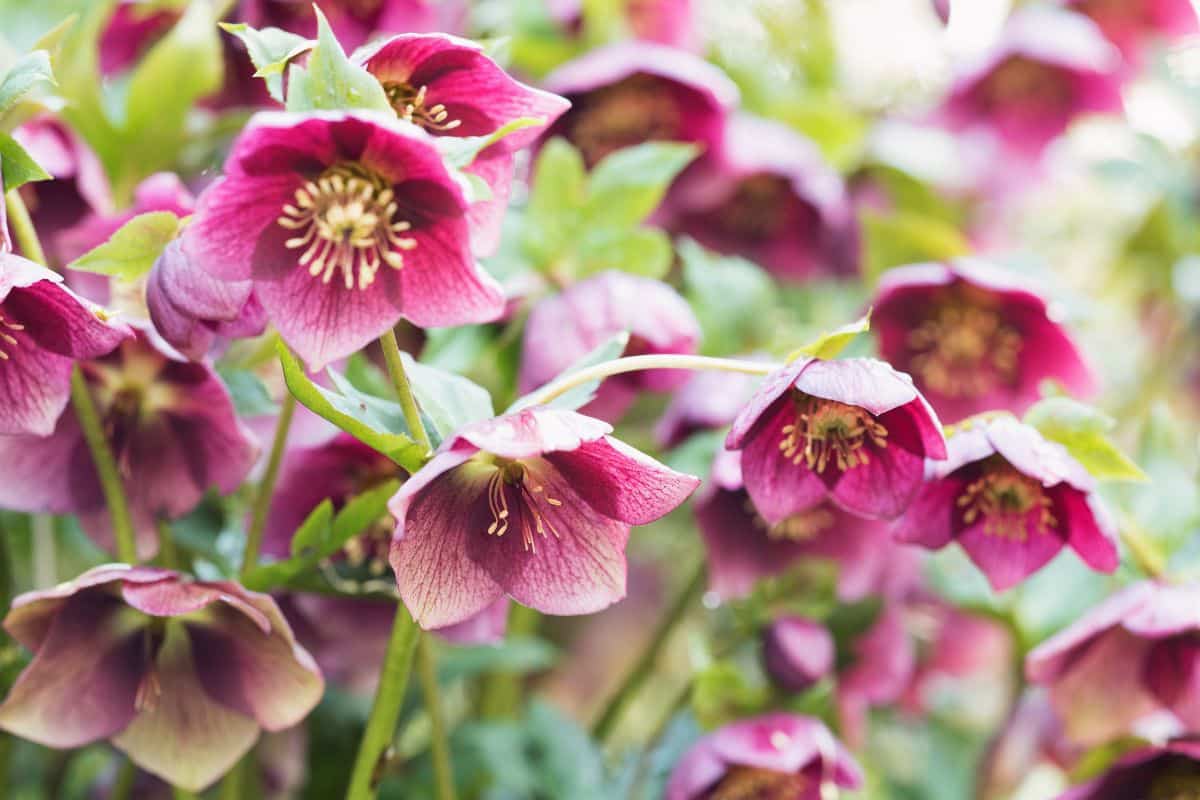
(USDA growing zones 4 - 9, but each specie differs):
Another slow growing but a timeless perennial flower. Seed-grown hellebore flowers would take a few years to bloom.
Hardy Hellebore flowers would bloom in early spring, while we have variants that would bloom as early as January or February, making them one of the earliest pollen sources for bees.
You can find a mixed blend of its seeds in the packet, but only purchase if you want a mix of colors.
This flower prefers to be grown using rich, moist, and well-drained soil where they can get the part shade to total shade exposure.
You can find them in color varieties of pink, dark purple, white, yellow, maroon, and cream.
Hellebores are pretty hardy; once established, they can go on surviving for decades, be sure they are planted where there are no strong winds.
10. Bleeding Heart ‘Lamprocapnos spectabilis.’
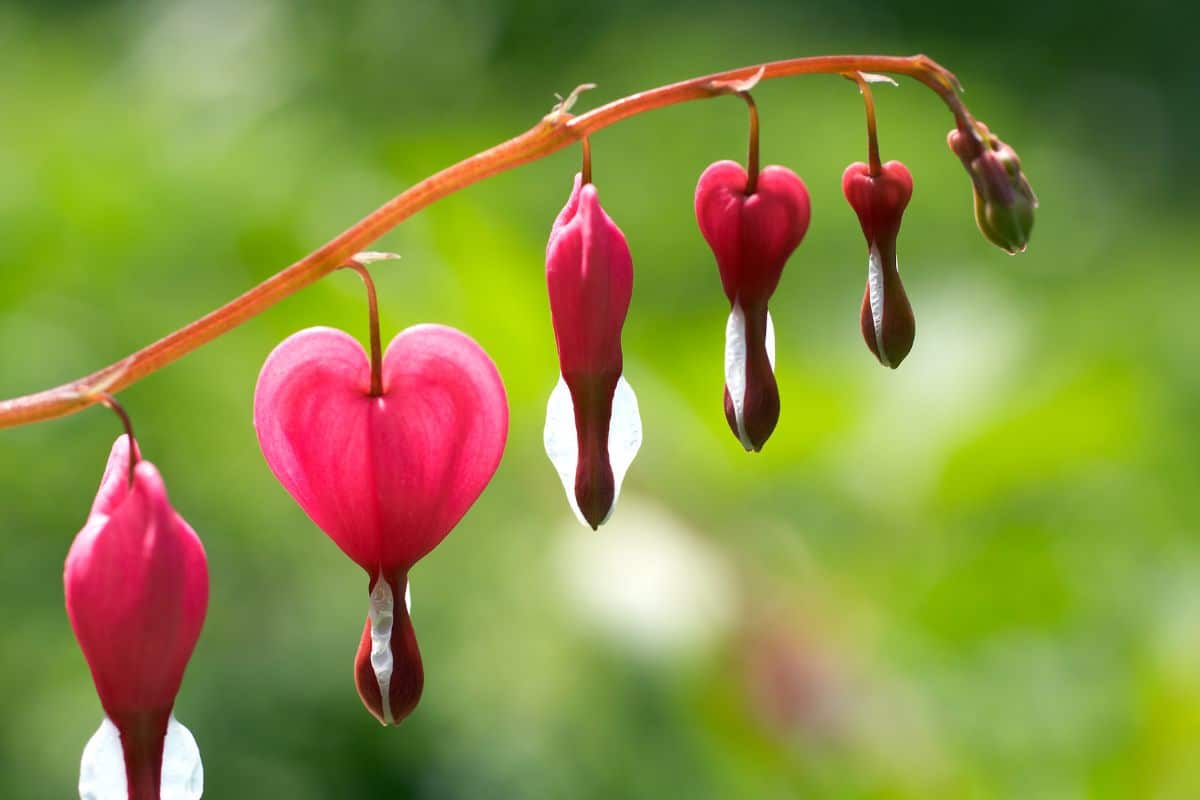
(USDA growing zones: 2 - 9)
This flower, formerly known as ‘Dicentra soectabilis,’ is now called the bleeding heart.
These heart-shaped beauties that beautifully swing down each branch are plants to look out for. Trust us, everything about the bleeding-heart flower is beautiful, from its fresh & chubby leaves to its rich foliage.
The downside, however, lies in the fact that the beauty being showcased is usually short-lived, as typical of most spring ephemerals. You might find yourself still soaking in the beauty it brings in spring, and the blooms will diminish right before your eyes.
When the temperature warms up, the plant goes into the dormant stage, and the once rich foliage will be nowhere to be found.
Be that as it may, instead of avoiding them altogether because of this, the trick is to have them planted close too soon to emerging plants as they would fill in the void.
Bleeding hearts should be planted in rich, moist, and well-drained soil. They are available in color varieties of white, pink, and red.
11. Lungwort ‘Pulmonary spp.’

(USDA growing zones: 4 - 9)
You will most likely get it wrong with this perennial if you are one to judge flowers by the name they go by.
The lungwort flower is nothing like its name. It has nicely dotted flowers, brilliantly splashed with streaks of white and silver. Its catchy eye foliage is something worth mentioning also.
However, like the bleeding heart, lungworts are ephemeral and are most likely to fade away once it's summer.
One intriguing fact about this flower is how some start off looking pink, then later turn blue after the whole pollination process. Although, the white flowers would remain sparking white during bloom.
The lungwort can be found in the colors white, blue, and pink. They prefer being grown in rich and well-drained soil, where they can get the part shade to total shade exposure.
12. Creeping Phlox ‘Phlox subulate’
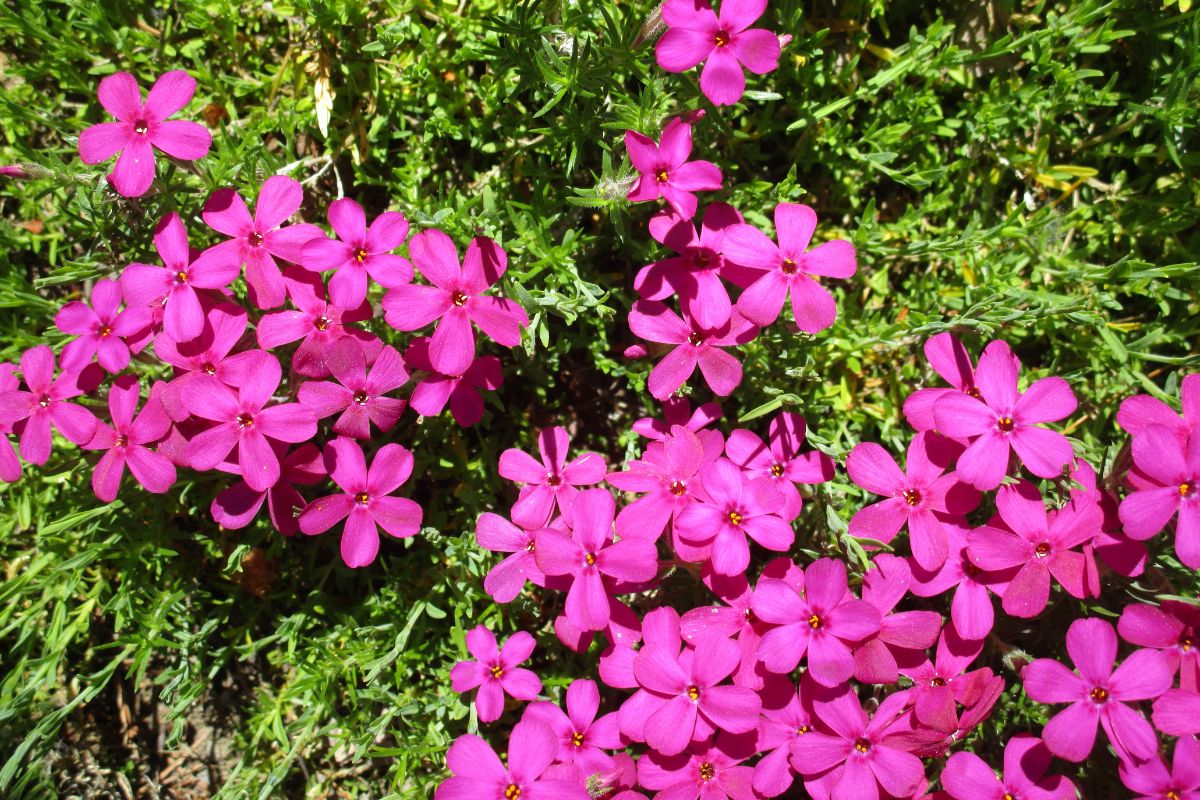
(USDA growing zones: 3 - 9)
Call it the mountain pink or moss Phlox, and you will be right still.
This beautiful spring flower grows into a carpet of different colors with its tiny flowers, which would sometimes invade or, should we say, creep into lawns or over rock walls.
Sadly, the flowers last about two weeks or a little more, but they make a beautiful sight while they last.
Creeping Phlox flowers are available in colors of red, purple, white, and pink. They should be grown in evenly moist, rich, and well-drained soil under full sun to part shade exposure.
Quick Tip: For beautiful aesthetics, have the creeping Phlox planted in a large mass as they would later make a big splash. Additionally, make weed control your priority early in the season so they do not get in the way of your plants.
13. Pigsqueak ‘Bergenia cordifolia.’
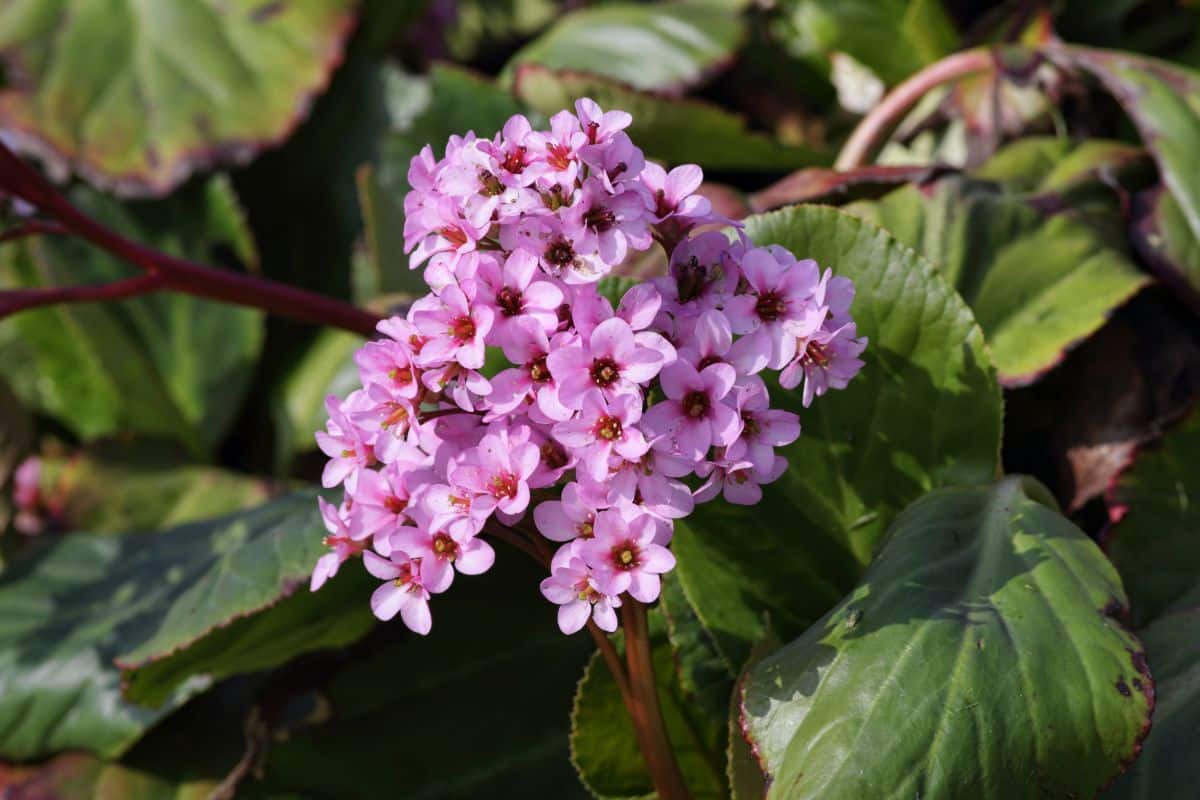
(USDA growing zones: 4 - 8)
The tiny feature of the pipsqueak flower is often listed as one of its shortcomings, but what it lacks in size, it makes up for its volume of flowers.
The sight of them hanging high above the glossy smooth leaves on contrasting burgundy stems is one to behold.
Irrespective of the flower blooms in early spring, the leaves never go unattractive all season long. During fall, for instance, they transform into a fantastic bronze-red color.
Pipsqueaks will do well when planted in moist, rich, and well-drained soil under full to part shade conditions.
They are available in the colors violet, pink, white, and red.
Quick Tip: This plant spreads sporadically via rhizomes but can be controlled by dividing it once every few years when it gets overgrown.
14. Primrose ‘Primula spp.’
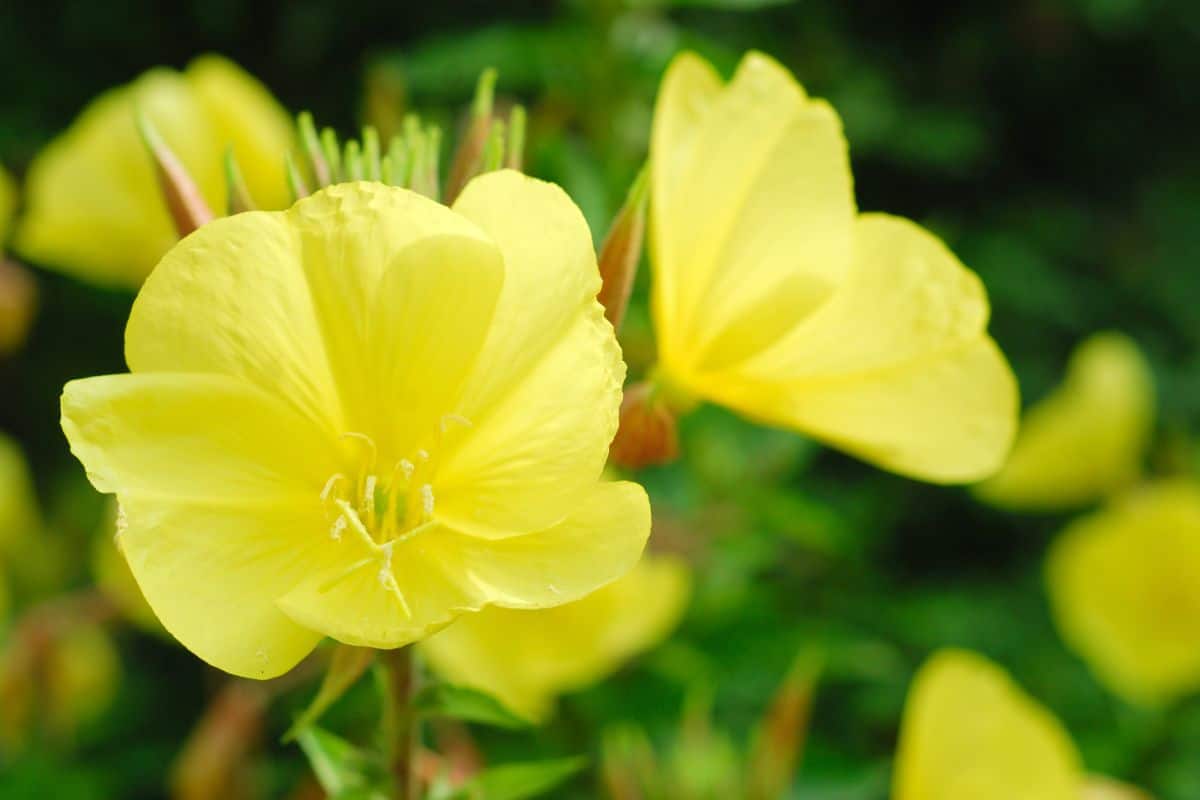
(USDA growing zones: 4 - 8)
One striking feature of all the variants of the Primrose flower is that they all look beautiful in large clumps, spreading out under trees.
Talking about variants, let's take you through what they entail briefly: we have English primroses (primula acaulis), the prevalent ones (primula Vulgaris), buttery yellow cowslips (primula veris), and the luxurious candelabras that hold their flowers atop tall, straight stems (primula japonica).
Different variants, in different colors, shapes, and sizes but the same beautiful look. They are available in colors white, yellow, red, pink, etc.
The Primrose would do well in rich, moist, slightly acidic, and well-drained soil. The primary care they require is dividing the clumps as they get overgrown.
15. Solomon's Seal ‘Polygonatum spp.’
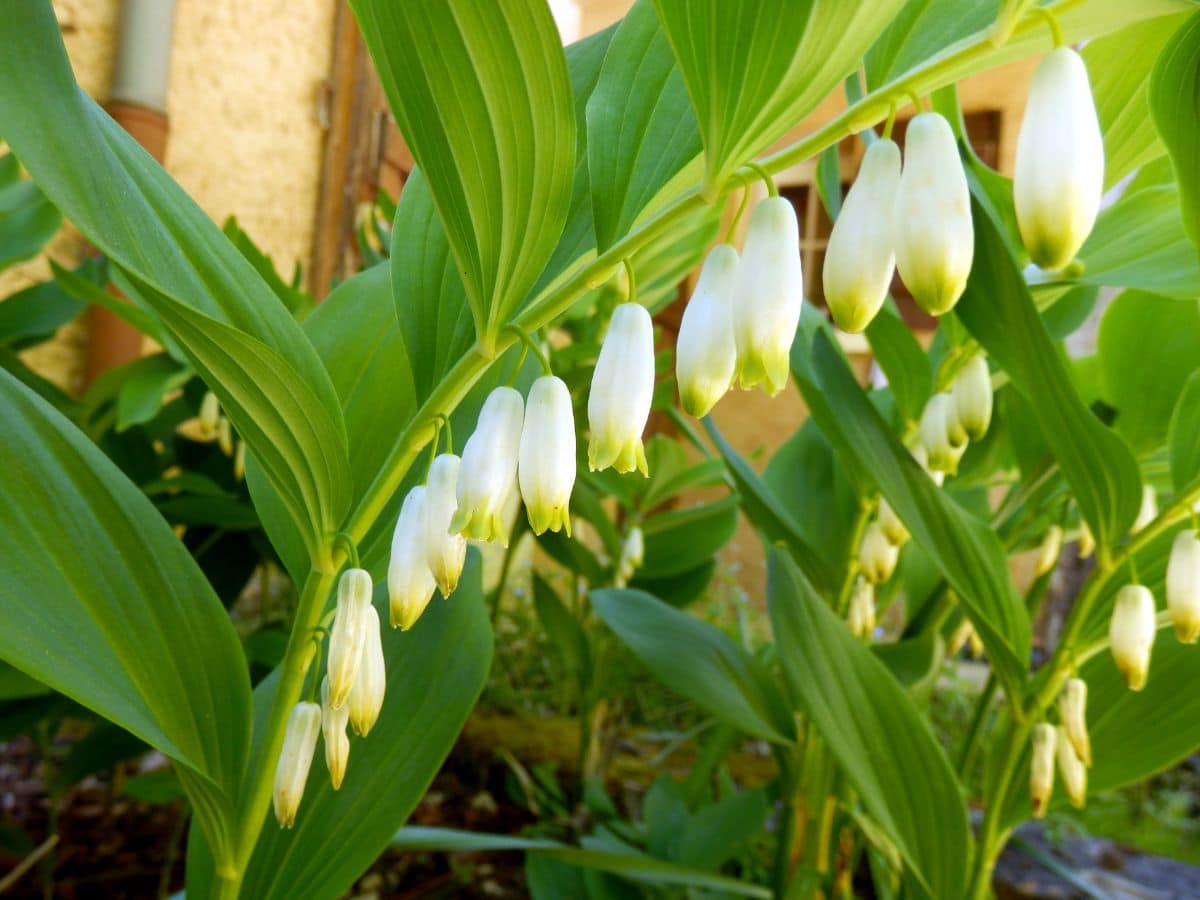
(USDA growing zones: 3 - 7)
This flower comes in a beautiful shade of green with stylishly bent stems and dangling flowers.
It gives us another form of beauty to marvel at after it blooms again with its glossy black seed pods.
They are best planted in large swaths because of their ability to spread out on their own. This planting method fits them better due to their short size and downward flowering pattern.
Solomon’s seal is available in the colors pink, green, and white. They do well when planted in rich but neutral, slightly acidic, moist soil under part shade to total shade exposure.
Quick Tip: maintain a permanently evenly moist soil that is not soggy for healthy growing plants.
16. Virginia Bluebells ‘Mertensia Virginia.’

(USDA growing zones: 3 - 8)
Would you believe it if we told you that these beautiful blue flowers you see started as pink buds?
That's correct. They start as pink buds before turning blue later.
How best to describe this flower? Alluring. But then, as normal spring ephemerals that would surely go dormant after a short while, they disappear as soon as flowering is over.
Virginia bluebells are available in colors of pink, white, and lavender. They would fare better in evenly moist, sandy, and well-drained soil under part shade to total shade exposure.
Quick Tip: Have your plants divided during late summer or early fall. to curtail the spread.
17. Sea Thrift ‘Armeria Maritima.’
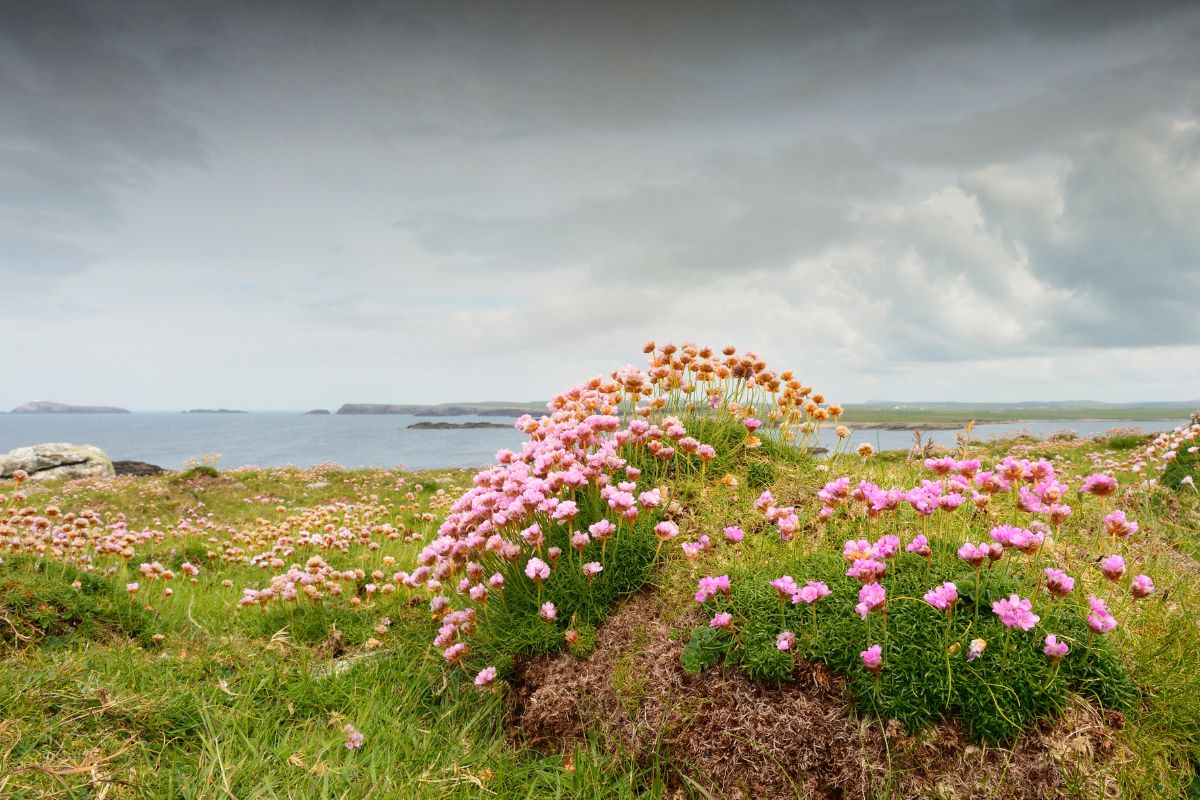
(USDA growing zones: 4 - 8)
This compact flower detests wet soil and prefers well-drained ones. They bloom in April, appearing in clusters about an inch in diameter.
They are available in pink & white colors and prefer full sun.
18. Garden Rock Cress ‘Arabia caucasian.’
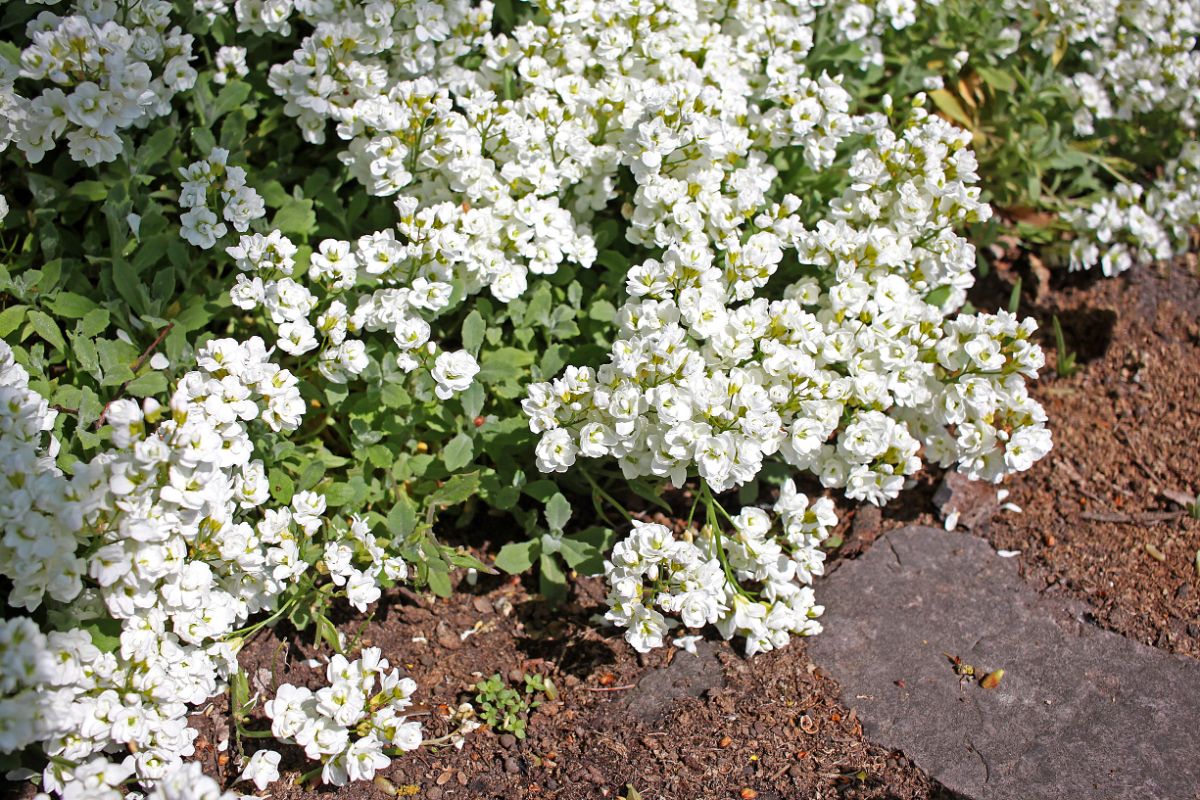
(USDA growing zones: 4 - 7)
GRS key features: low growing (about 1ft tall), tolerates heat and drought, and beautiful blooms in April.
Plant in dry, sandy, and well-drained soil under full sun.
Do not overwater and cut back once flowering is done for thicker growth.
19. Corydalis ‘Corydalis lutea.’
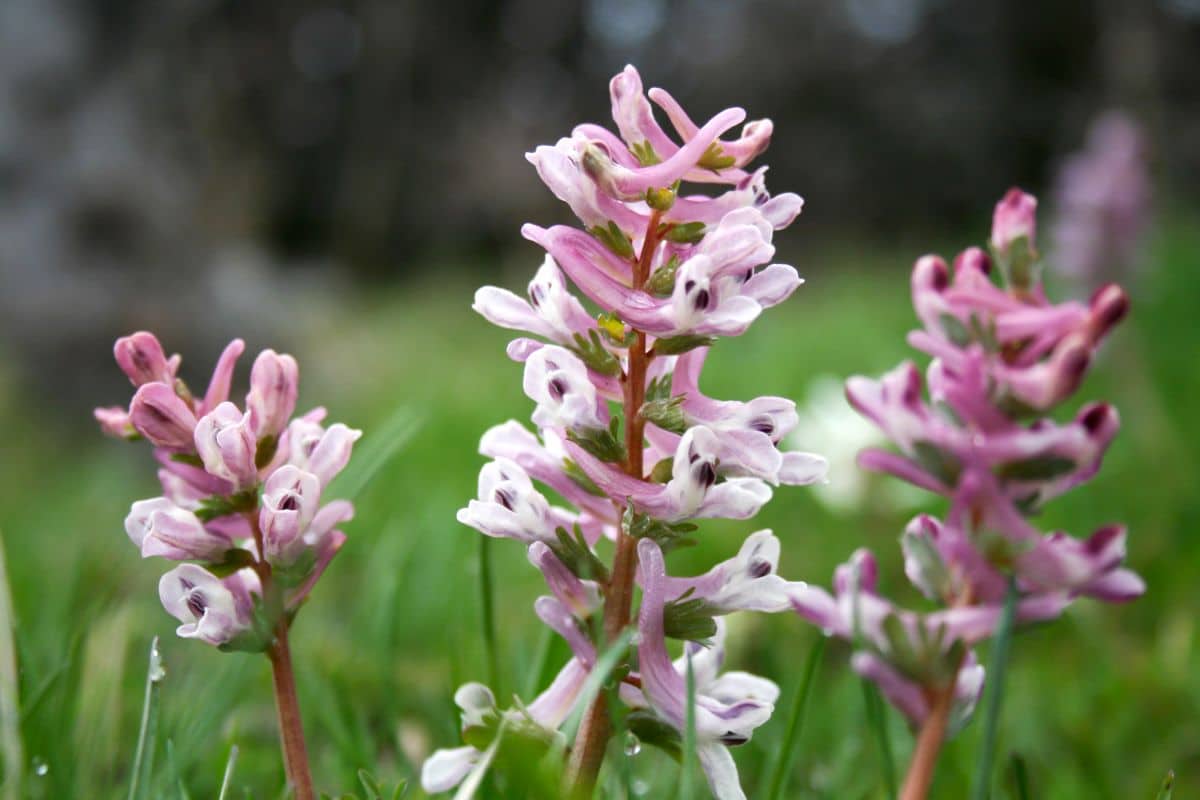
(USDA growing zones: 5 - 7)
Key features: small shiny flowers, long blooming (stretches from spring to early fall, even to the first frost times), depreciating flowers in hot weather.
Also known as yellow corydalis, this flower grows aggressively when planted in rich, moist soil. Although, you can have it removed to control the spread.
Plant in rich, moist soil under partial sun to full sun conditions.
20. Candytuft ‘Iberis sempervirens.’
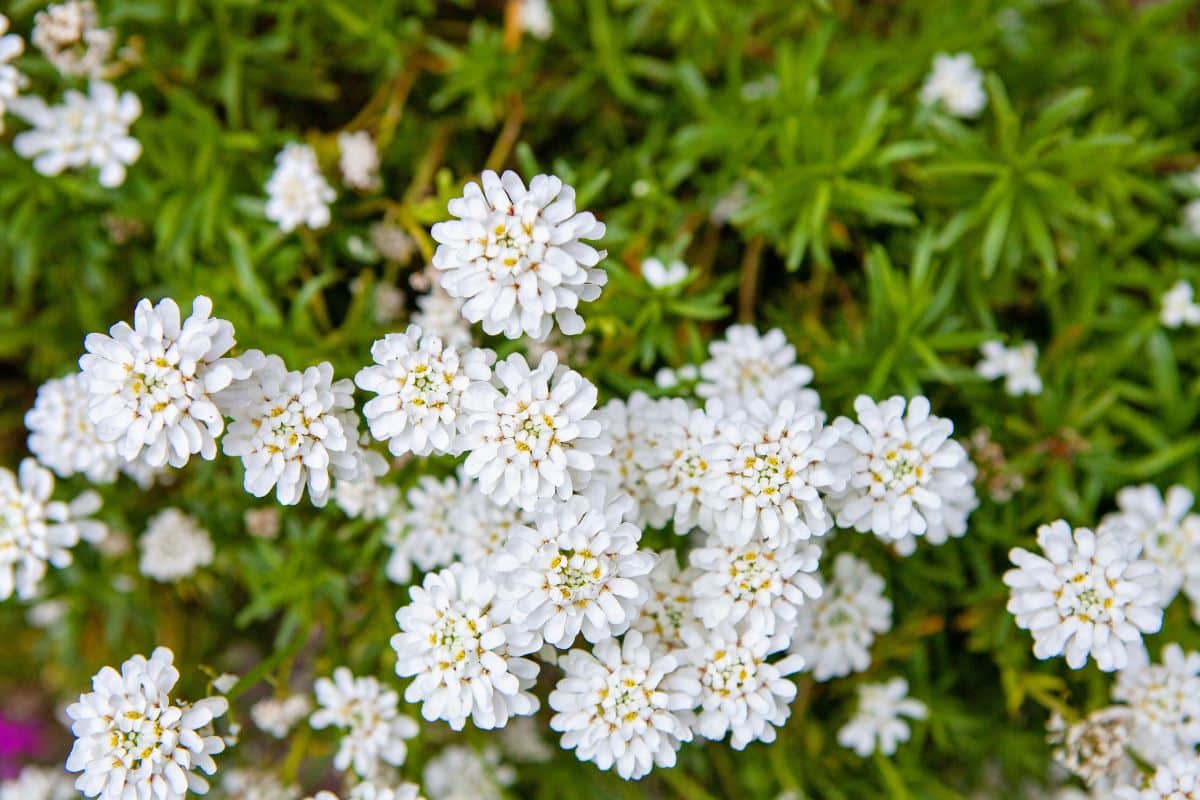
(USDA growing zones: 3 - 8)
Timeless low-growing perennial with intense clusters or four petals. Candytuft flowers bloom from March to May.
Plant in well-drained and medium moisture soil under full sun.
Color varieties are pink and white.
21. Woodland Phlox ‘Phlox divaricate
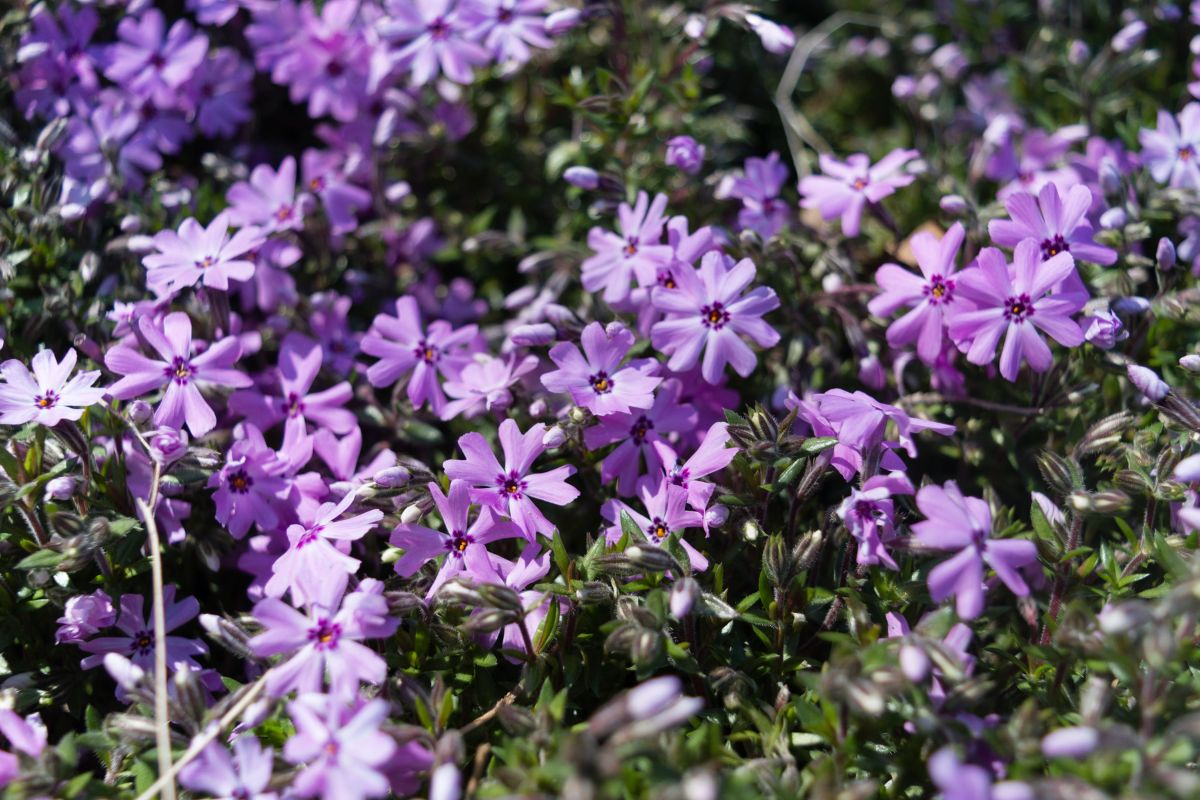
(USDA growing zones: 3 - 8)
Key features: five petal flowers and shade-loving plants.
Color varieties include violet, blue, lavender, etc.
Plant in rich, moist, and well-drained soil.
Quick Tip: to retain the proper moisture and keep the roots cool, add a layer of mulch around the plant.
22. Yellow Alyssum ‘Aurina saxatilis.’
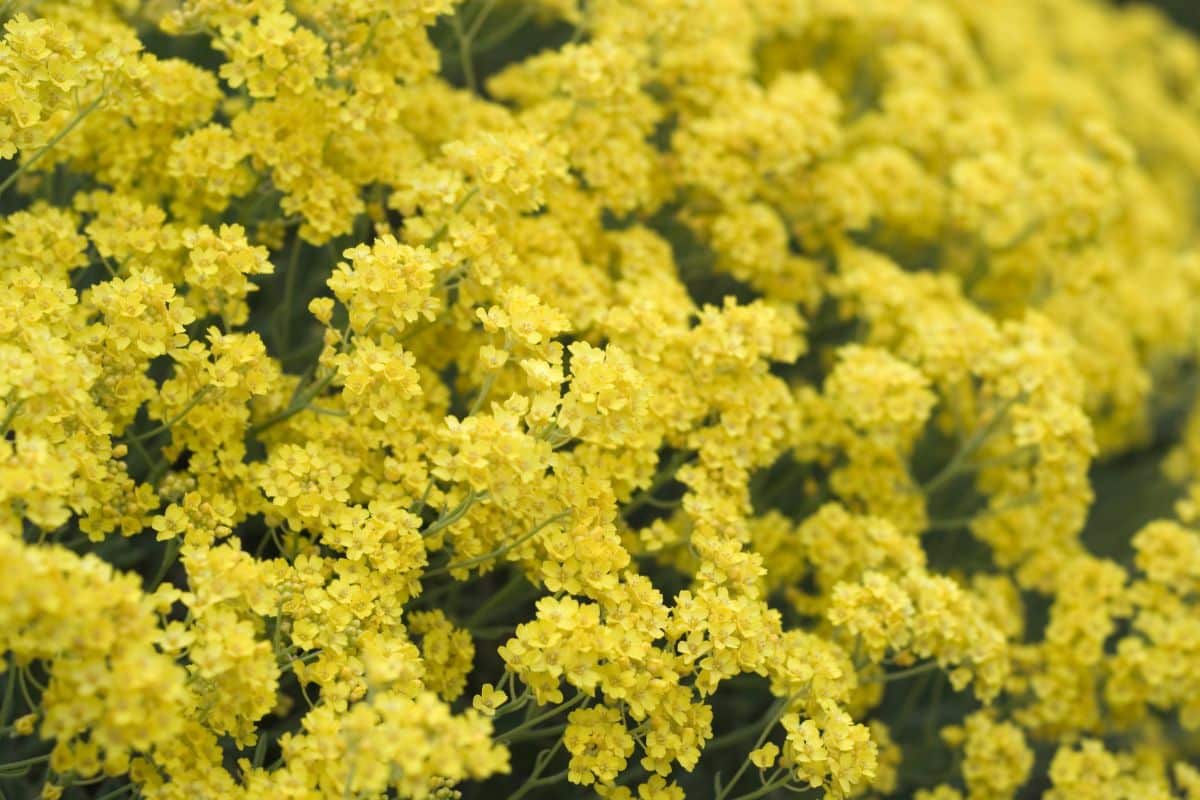
(USDA growing zones: 4 - 7)
Often called the ‘basket of gold.’
Key features: low growing, peculiar spreading trait.
Plant in dry, sandy, and well-drained soil.
Bloom period? April. You can promote further blooming and keep it neat by cutting back the plant after flowering.
23. Japanese Pieris ‘Pieris Japonica.’
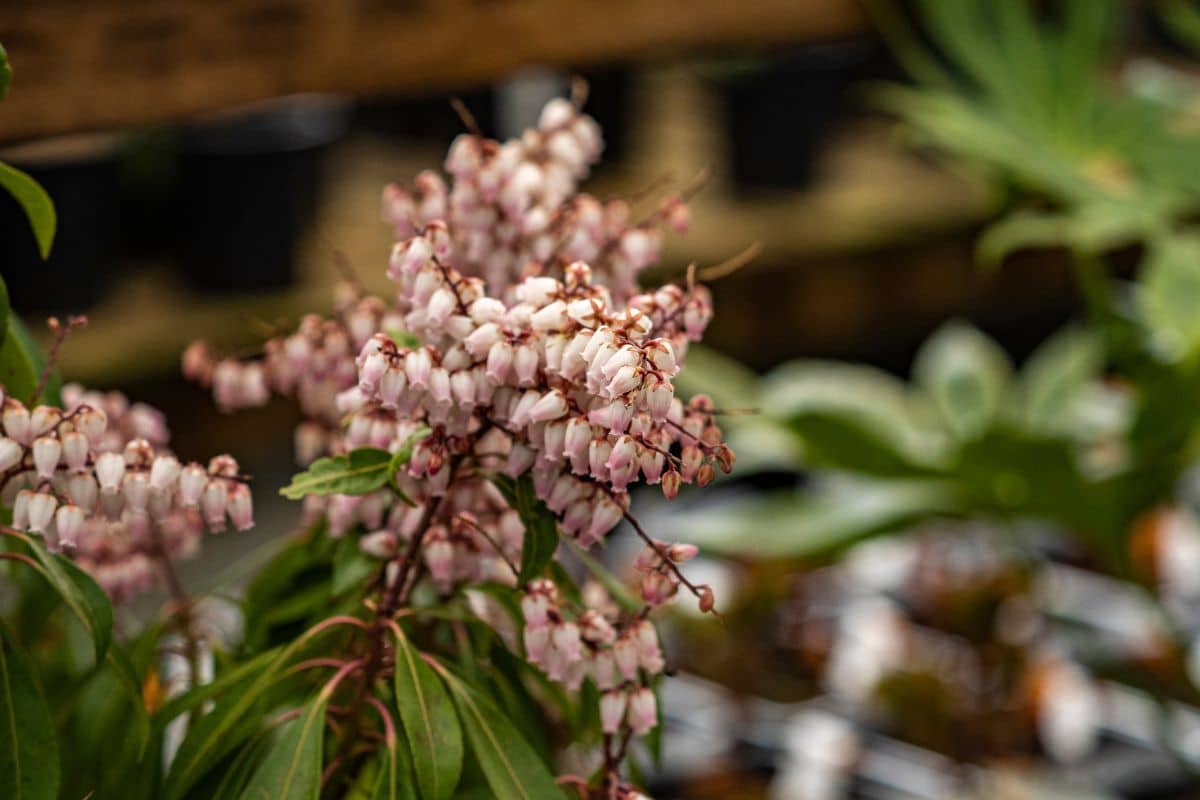
(USDA growing zones:5 - 8)
They are also known as Andromeda or lily of the bush. They appear in clusters quite early in March or April. The foliage is initially bronze in color but turns bright green when mature.
Plant in rich, medium moisture, slightly acidic, and well-drained soil under full sun to part shade exposure.
Color varieties are white and pink.
Quick Tip: Take out spent flowers to keep plants neat and promote further blooming.
24. Korean Spice Viburnum ‘Virbunum carlesii.’
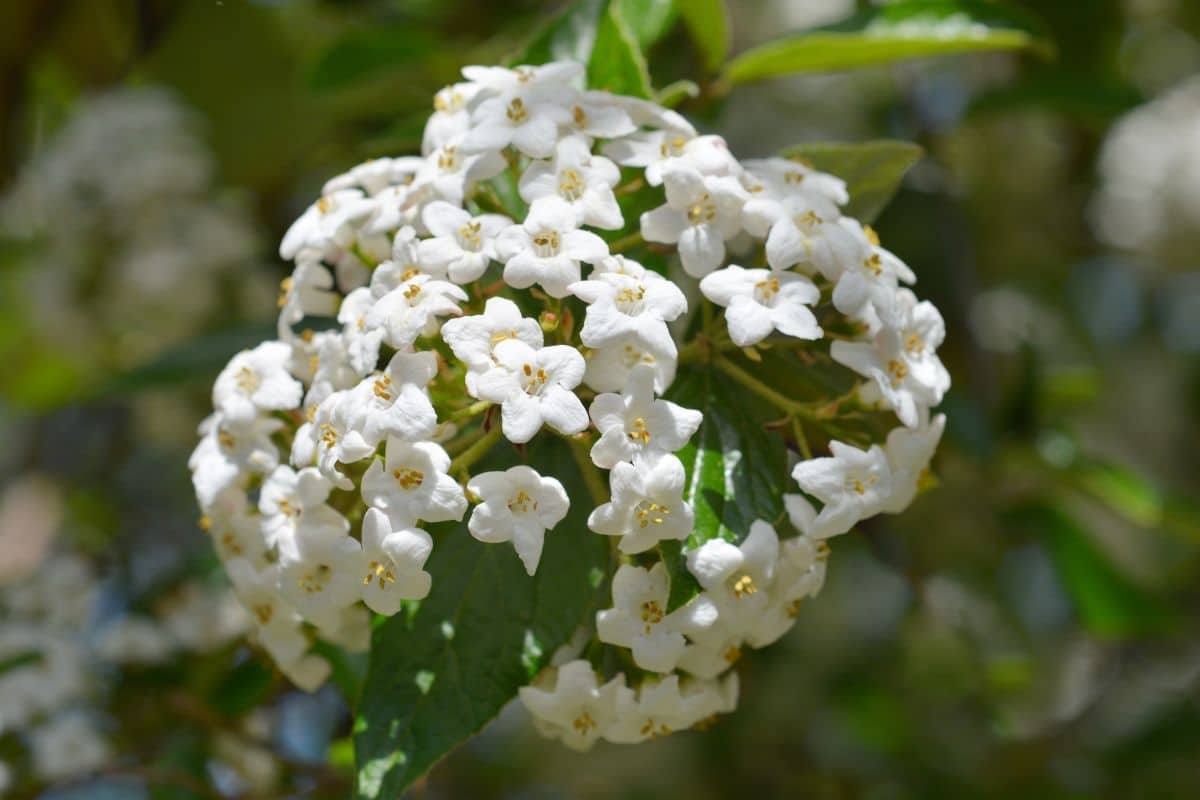
(USDA growing zones: 4 - 7)
The Korean spice is tiny but coordinated little flowers in rounded clusters that bloom from March - April.
They are pink buds at first before changing to white blooms with faint pink lines.
Plant in average, medium moisture, acidic, and well-drained soil under full sun to part shade exposure.
25. Stewartstonian Azalea ‘Rhododendron’
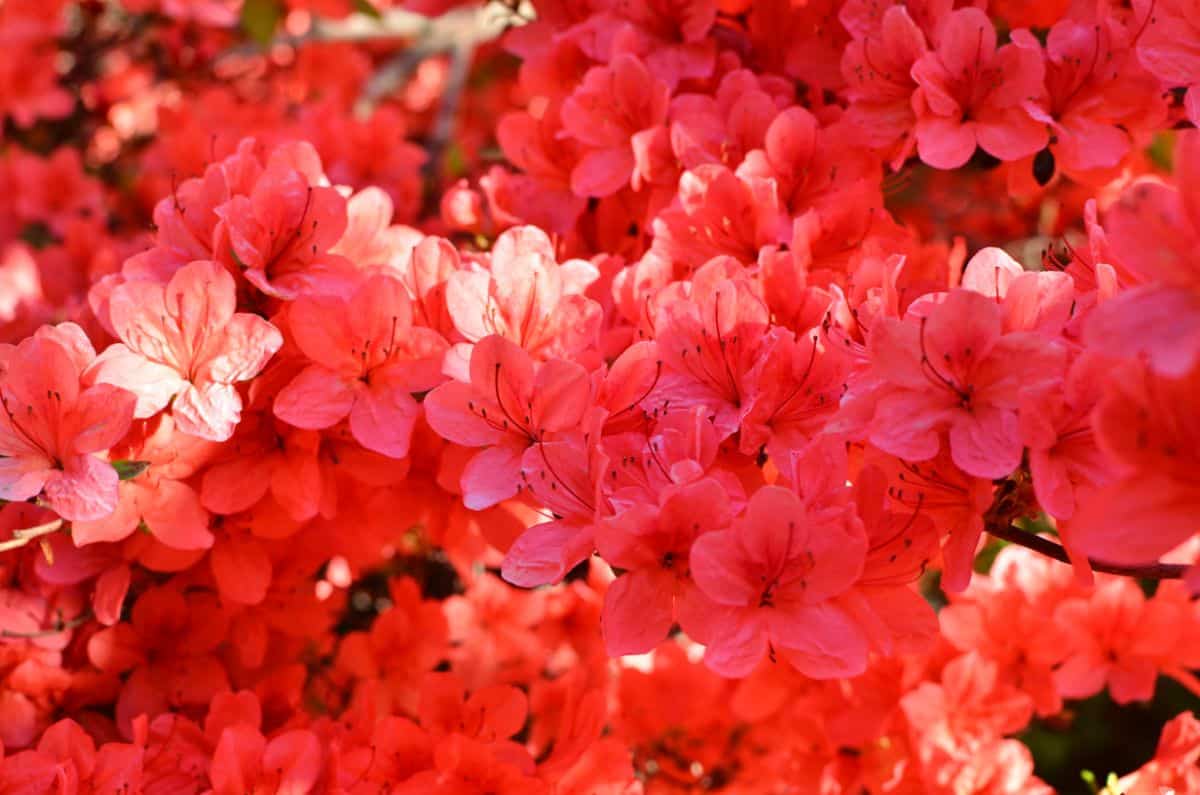
(USDA growing zones: 5 - 8)
The selling point of this flower is not its dark glossy green leaves, nor is it the eventual reddish-brown color it turns to during fall; it is its bright & attractive orange-red flowers that bloom every April.
The Azalea flower is a moisture-loving one, but ensure that the soil isn't soggy. Plant in rich, acidic medium moisture and well-drained soil.
Conclusion
Be enlightened with the outline above of beautiful spring perennial flowers. Be sure to follow the quick tips, as they will give you an insight on how to care for and maintain these long-lasting flowers properly.




